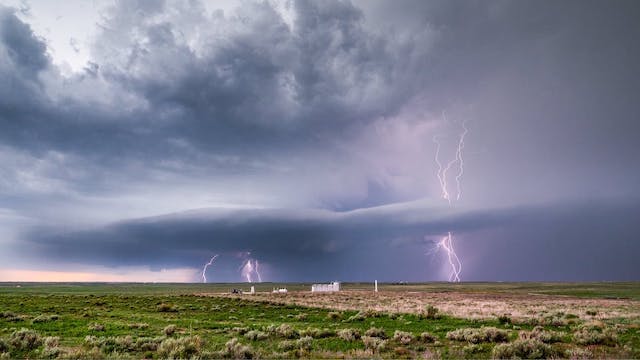There has been a lot of talks lately about off-grid living, and whether or not it is legal in various states across the country. Texas is one of those states where there is a fair bit of confusion on the matter. So, we decided to do some research and put together this blog post to clear the air once and for all! Keep reading for a detailed breakdown of exactly what you need to know about off-grid living in Texas!
What is off-grid living, and why do people choose to do it?
Off-grid living simply means living without being connected to the public utility grid. This can mean anything from generating your own power with solar panels or a wind turbine, collecting rainwater for drinking and household use, and composting your own waste. People choose to live off the grid for a variety of reasons, including wanting to be more self-sufficient, wishing to live a simpler life, or wanting to reduce their environmental impact.
Is off-grid living legal in Texas?
The short answer is yes, off-grid living is legal in Texas! However, there are a few things to keep in mind if you’re planning on making the switch.

First and foremost, you’ll need to make sure that your property is zoned for off-grid living. This means that it must be located in an area that is zoned for agricultural or rural use. If you’re not sure about the zoning of your property, you can contact your local county courthouse for more information. Once you’ve determined that your property is suitable for off-grid living, you’ll need to obtain a few permits from your county or city government in order to set up your off-grid systems. These permits are typically required for installing things like solar panels, wind turbines, and rainwater collection systems.
While it may seem like a lot of work to get started with off-grid living in Texas, the good news is that once you have all of the necessary permits and approvals in place, you’ll be able to enjoy a more self-sufficient lifestyle free from the constraints of the public utility grid!
Where Can You Live Off The Grid In Texas?
Here are 10 counties in Texas where you can live off the grid:
10) Gillespie County
Gillespie county is located in the Texas Hill Country and has a population of just over 24,000 people. The county seat is Fredericksburg, which is a popular tourist destination. The county is home to a number of state parks and recreation areas, making it a great place to enjoy the outdoors.
If you’re looking for a place to live off the grid in Gillespie County, you’ll need to make sure that your property is zoned for agricultural or rural use. You can contact the Gillespie County Courthouse for more information about zoning restrictions in the area.
9) Llano County
Llano County is located in the Texas Hill Country and has a population of just over 19,000 people. The county seat is Llano, and the county is home to a number of state parks and recreation areas.
Like Gillespie County, Llano County requires that properties be zoned for agricultural or rural use in order to live off the grid. You can contact the Llano County Courthouse for more information.
8) Mason County
Mason County has a population of just over 4,000 people and is located in Central Texas. Mason, Texas, has long been regarded as a wonderful place to call home. The town is dominated by agriculture and is situated on Comanche Creek. The area has flourished both financially and culturally for over 150 years.
You can contact the Mason County Courthouse for more information.
7) McCulloch County
McCulloch County is located in Central Texas and has a population of just over 7,600 people. The county is primarily an agricultural area. Cattle, sheep, hogs, goats, horses, small grain, hay, cotton, and grain sorghum are the main agriculture produced here. The county also has a variety of industrial businesses, such as frac sand plants and a trailer manufacturer. Seven major highways go through Brady, making it a trade center for many rural communities. This makes wholesale and retail trade a significant part of the economy.
6) El Paso County
El Paso County is the westernmost county in Texas with a population of over 800,000 people. El Paso has an arid to semi-arid climate which isn’t always ideal, but many people decide to live off-grid in this county. There are a number of reasons for this, such as the low cost of land and the fact that there are many sunny days which makes solar power a viable option.
5) Dallas County
Dallas County is located in North Central Texas and has a population of over two million people. Dallas is the ninth most populous city in the United States and the third most populous city in Texas. Dallas is a major center for culture and commerce.
If you’re looking for an off-grid lifestyle in Texas, Dallas County may go overlooked because of its high property prices, expensive housing, and low availability of land.
4) East Texas Piney Woods
One area you may want to check out is behind the secluded pine curtain of the East Texas Piney Woods, which is outside Houston. Piney Woods region is known for its dense growth of underbrush in areas like the “Big Thicket.” Some would even say it’s culturally removed from the rest of Texas.
3) Collin County
Collin County has a denser population compared to a few other places we’ve mentioned. The cost of living and property is also a little higher than the state’s average. But people choose this area because of the climate, which is cooler than the rest of the state. There is also off-grid land readily available to purchase here.
2) Red River County
Many people would say that Red River County is the best off-grid county in Texas. It’s climate is relatively mild and there is plenty of rainfall. Those who live here have no trouble growing foods and there is frequent rainfall which makes rain collection a breeze.
1) Terlingua
Terlingua is a place that’s known for its free spirits. The Texas ghost town may just be the off-the-grid capital of the U.S. John Wells is an innovator and creator of the Field Lab, a self-sustained 40-acre desert homestead.
John bought 40 acres close to the Mexican border in 2007 for about $8,000, then added another 20 acres for $5,000 not long after that. Not long after that, he put up his first structure, a house that cost $1,600, under the banner Southwest Texas Alternative Energy and Sustainable Living Field Laboratory.
The New York Times raved about him. Treehugger called him a modern-day Thoreau. I’m not sure I agree with either of these after reading through his blog posts but feel free to make your own judgment.
How to Set Up Your Own Off-Grid Home in Texas
With rising energy costs and the increasing effects of climate change, more and more people are interested in living off the grid. While it can be a challenge to completely disconnect from the grid, it is possible to generate your own power and water while still being connected to utilities. Here are some tips on how to set up your own off-grid home in Texas.
First, research your options for generating power. Solar and wind are both good choices in Texas, but you will need to factor in the cost of batteries and backup generators. You will also need to consider how you will use water. If you have a well, you can use a pump to bring water into your home. If you are on city water, you can install a rainwater catchment system.
Once you have a plan for generating power and water, you will need to purchase or lease land. Ideally, you should find land that is already off the grid, but if that is not an option, you can look for land with good access to sun, freshwater, and wind.
Finally, you will need to build or purchase an off-grid home. There are many prefabricated options available, or you can build your own using sustainable materials. With some planning and effort, you can have your own off-grid home in Texas.
Pros and cons of off-grid living in Texas
The Lone Star State is known for its wide-open spaces, making it a popular destination for those who want to live off the grid. While there are many benefits to this lifestyle, there are also some challenges that need to be considered. One of the biggest advantages of off-grid living is the ability to be self-sufficient. With your own water and power sources, you can live independently from utilities and the government.
However, this also means that you will need to be prepared for emergencies, as you will not have access to help if something goes wrong. Additionally, off-grid living can be isolating, as you will be cut off from traditional modes of communication and transportation. But for those who crave solitude, this may actually be a desirable aspect of the lifestyle.
Ultimately, whether or not off-grid living in Texas is right for you depends on your individual needs and preferences. If you are interested in living a more sustainable and self-sufficient lifestyle, then off-grid living in Texas may be the perfect choice for you.
What City In Texas Has Free Land?
Did you know that some areas in Texas will give you free land to move there? One area in Texas that has free land is La Villa. It’s 80 miles inland from the gulf along the Rio Grande River. It’s a suburb of McAllen and is growing fast. The city is also looking to bring more people there. Learn more here.
